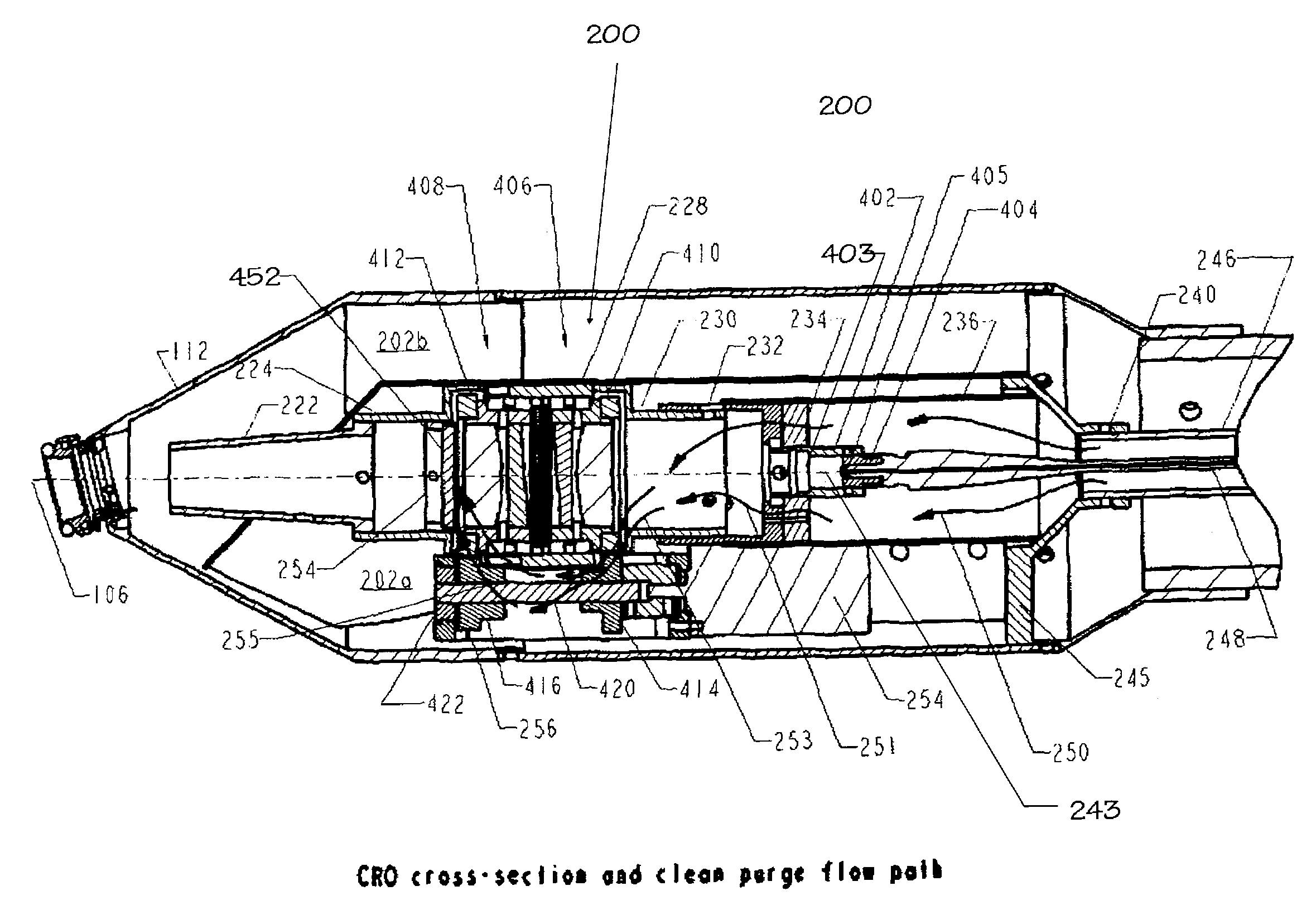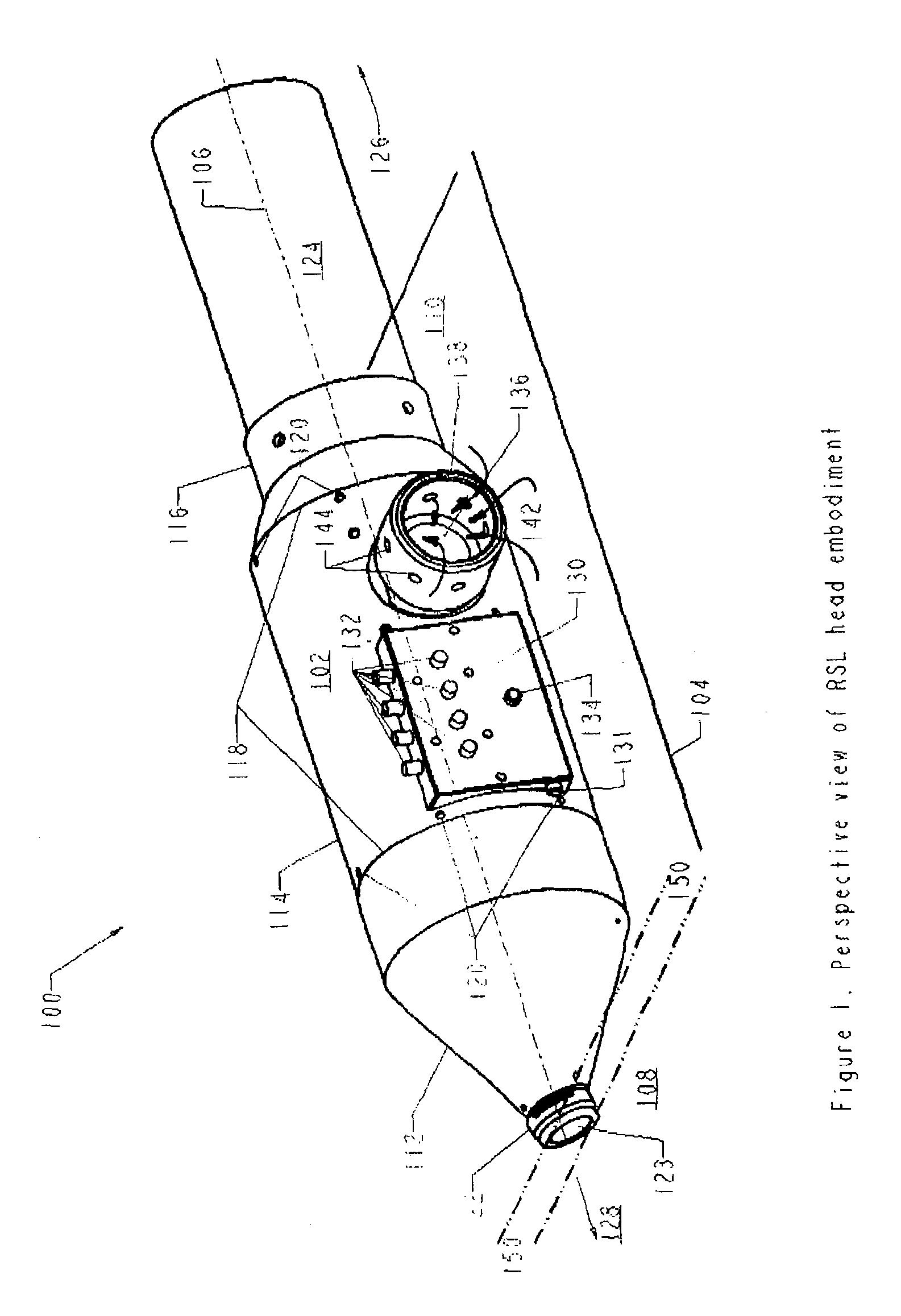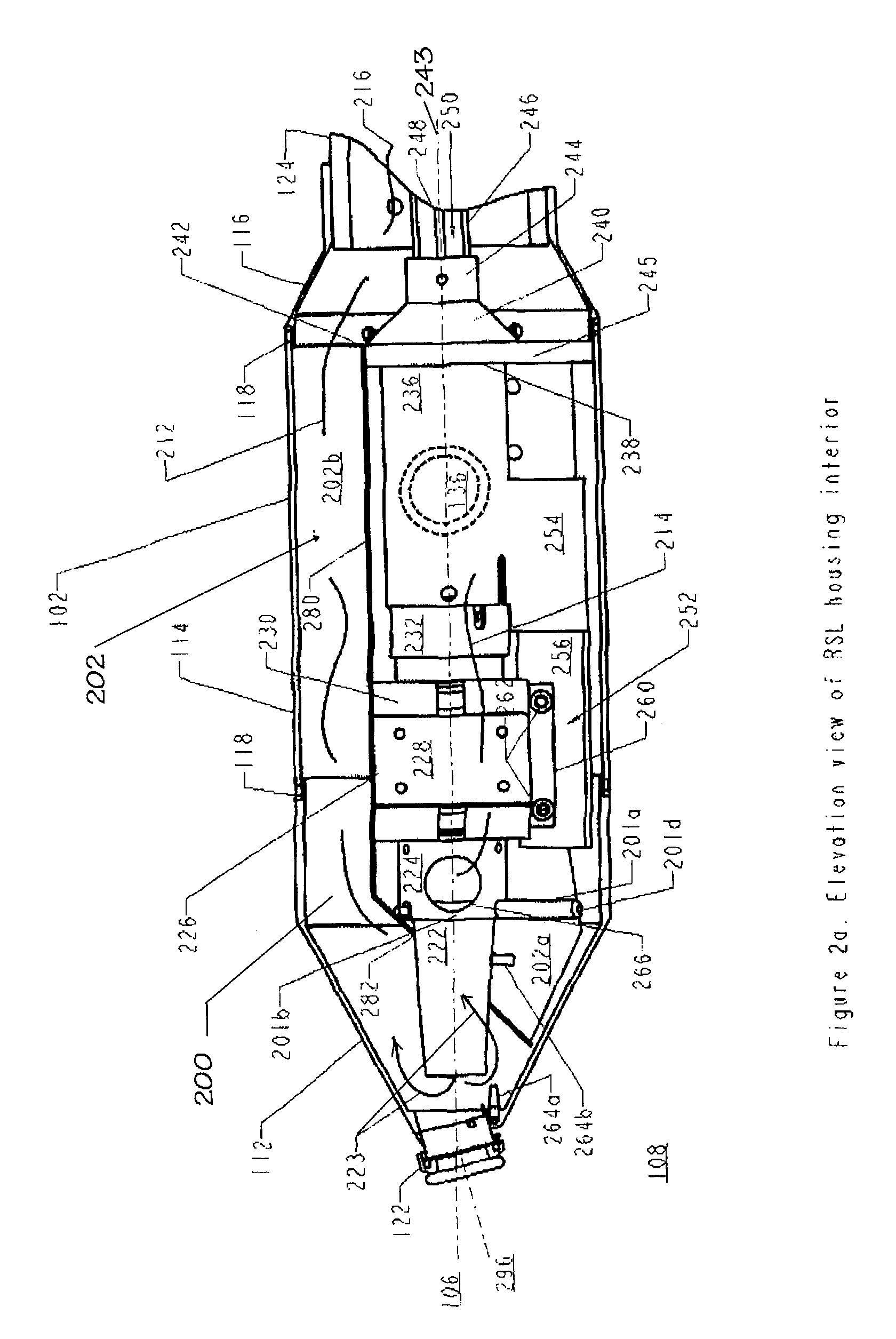Rotary scanning laser head with coaxial refractive optics
a laser head and coaxial technology, applied in metal-working equipment, welding equipment, manufacturing tools, etc., can solve the problems of unavoidable reflective energy loss at each reflection, small amount and rate of scanning, and unfavorable high-power laser beam scanning, and achieve the effect of reducing the number of reflections
- Summary
- Abstract
- Description
- Claims
- Application Information
AI Technical Summary
Benefits of technology
Problems solved by technology
Method used
Image
Examples
Embodiment Construction
[0089]With reference to FIG. 1 there is shown an external perspective view of one preferred embodiment 100 of the present Rotary Scanning Laser (RSL) head invention incorporating an embodiment of the present CRO invention. The RSL head 100 has a longitudinal housing 102 with a longitudinal body of length 104 aligned along a central axis 106 between a proximal nose end 108 and a spaced apart distal hose coupling end 110. The housing 102 forms a closed, continuous rigid shell with an essentially circular cross-section, tapered at the two ends. The housing is assembled from three rigid, thin wall body sections 112, 114, 116 joined at overlapping adjacent ends 118.
[0090]The RSL head 100 is a compact, hand held laser-scanning head capable of receiving, delivering and directing radiant energy in a precisely controlled pattern. The head 100 is coupled to a high intensity external radiant energy source (e.g., a high power, fiber guided input laser beam) received through a flexible service h...
PUM
| Property | Measurement | Unit |
|---|---|---|
| angle | aaaaa | aaaaa |
| velocity | aaaaa | aaaaa |
| velocity | aaaaa | aaaaa |
Abstract
Description
Claims
Application Information
 Login to View More
Login to View More - R&D
- Intellectual Property
- Life Sciences
- Materials
- Tech Scout
- Unparalleled Data Quality
- Higher Quality Content
- 60% Fewer Hallucinations
Browse by: Latest US Patents, China's latest patents, Technical Efficacy Thesaurus, Application Domain, Technology Topic, Popular Technical Reports.
© 2025 PatSnap. All rights reserved.Legal|Privacy policy|Modern Slavery Act Transparency Statement|Sitemap|About US| Contact US: help@patsnap.com



